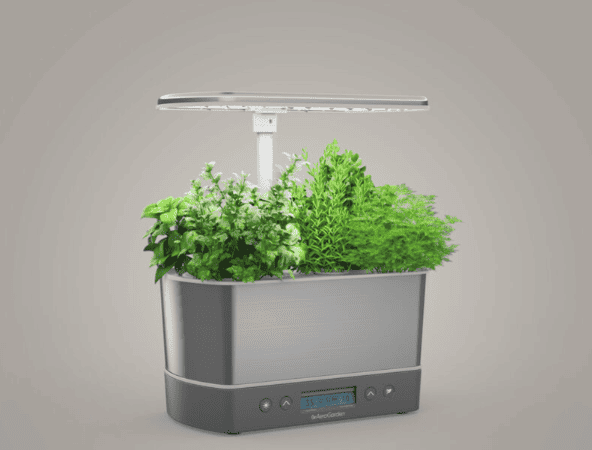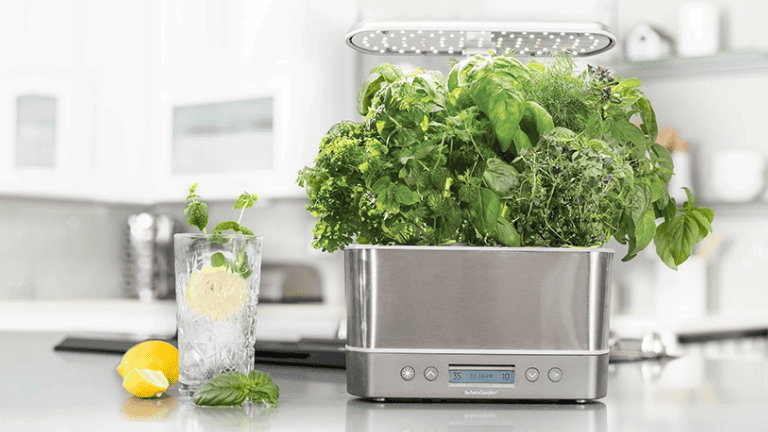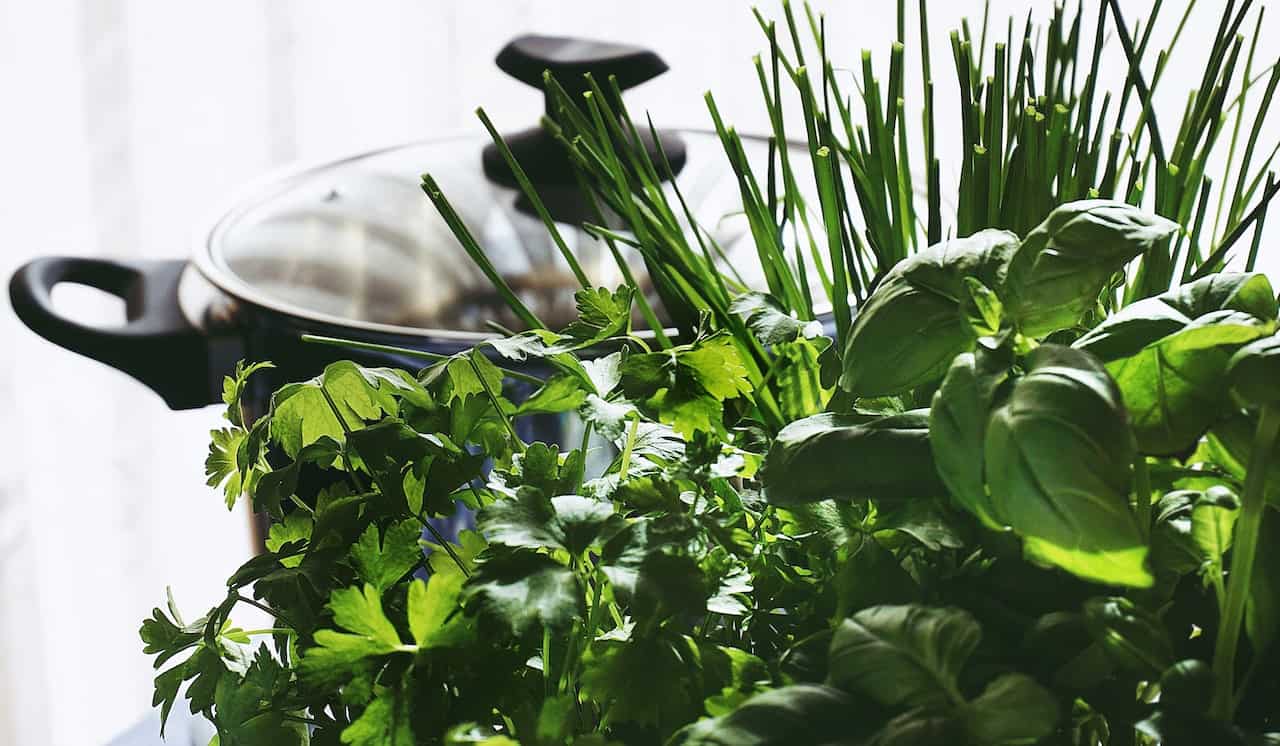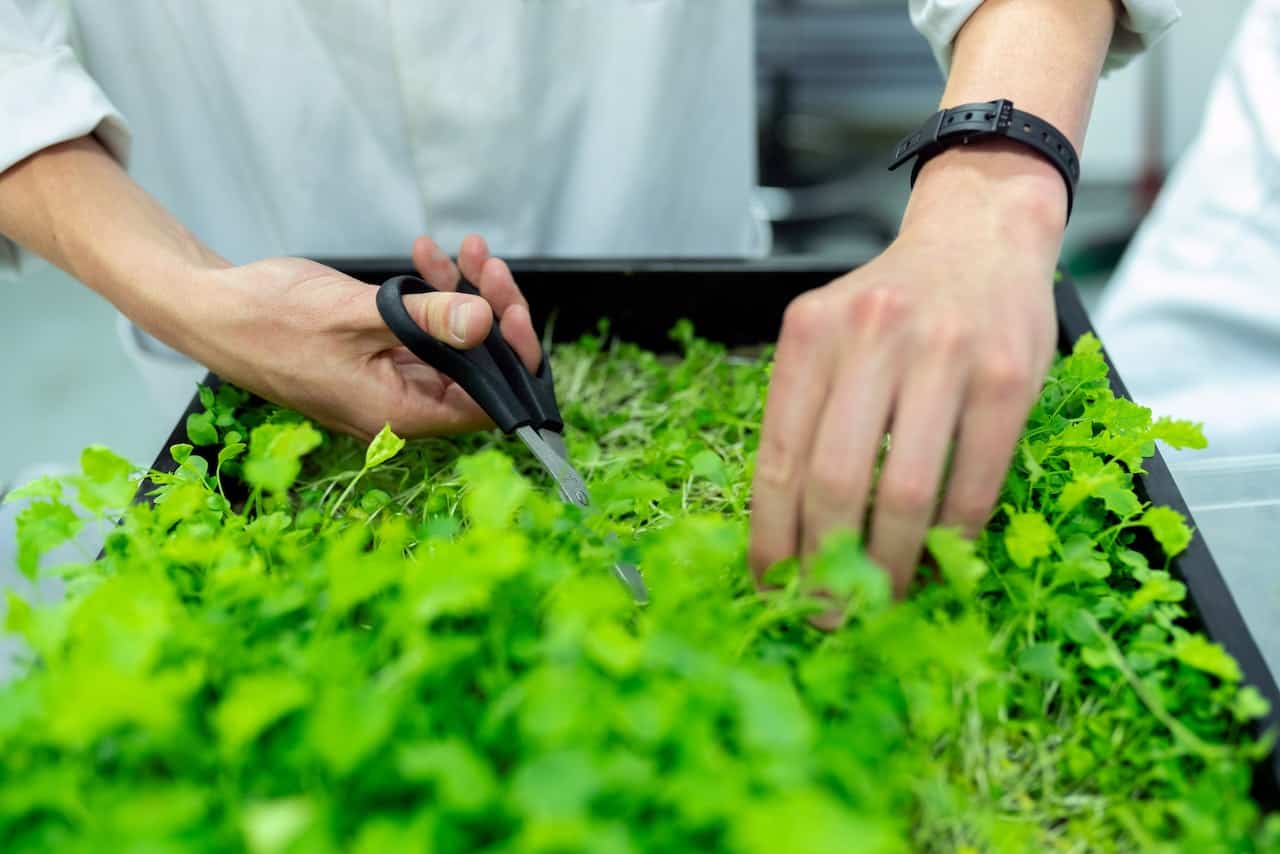For tough plants that might be challenging to cultivate inside, AeroGardens are a fantastic alternative. These techniques are a surefire way to acquire wholesome crops from your veggies, herbs, and flowers since they automate & regulate the growth process. How would I start, you may be asking yourself. Information about every plant’s personality, dietary requirements, and development cycles are crucial if you want to choose which plants will do best in AeroGarden systems.
We’ll examine some of the most well-liked seed pod kits & herbs in this post to help you choose which ones are ideal for you to start. We will also cover a few more ambitious types for farmers with more experience. Let’s begin and flourish right now. Let’s continue to learn more about what is best for your aero gardening.
What is an Aerogarden

A hydroponic greenhouse system called AeroGarden is the ideal option for a simple and low indoor garden since it is failsafe, soil-free, and foolproof. It has a space to store your seeds, a chamber for plant and water food, and a connected light. The practice of plants grown in a nutrient-rich water-mist environment without the need for soil or an aggregate medium is known as aeroponics, a kind of hydroponics.
In order to cater to a range of indoor gardeners, AeroGrow presently provides 33 distinct models at various pricing points and customer benefits. Michael Bissonnette launched the company in July 2002. Growers have a wide range of alternatives, with more than 150 Seed Pod Kits. Here are some best herbs for aerogarden.
Herbs on Aerogarden
Herbs are ideal for AeroGarden systems since many of them grow fast and are manageable in size. , Therefore, they are ideal for those who are just starting out or need faster yields. Thai basil, thyme, parsley, and curly Italian parsley are the best herbs to grow in such an aerogarden.
This is because they produce many harvests from a single plant, develop swiftly, and have a modest profile. You may start growing herbs fast & simply with one of the seed pod kits available from Aerogarden.
Herbs to Grow in an Aerogarden

Even if you do not have a specific aerogarden site, many herbs are simple to cultivate. You may easily pick herbs whenever you want by growing them at home. Soups, stews, salads, and beverages taste better with a fast sprinkle of fresh basil and mint. Even if you are in an apartment or condominium, all you need to start your home herb aerogarden is a tiny planter box in a bright kitchen window or a container on your balcony. Here are some best herbs for aerogarden.
🌿Basil
Basil is Britain’s most extensively marketed herb and is a crucial component in many recipes, particularly summer salads and traditional Mediterranean dishes. Despite being sacred in its native India, it flourishes on British soil and is ideal for your garden. Basil should be moved indoors during the winter since it is a delicate annual that cannot tolerate cold temperatures and frost. Basil can only be cultivated outside in the summer. The herb must be planted in healthy soil and exposed to as much light and warmth as possible.
Basil can thrive in greenhouses and kitchen window frames for extended periods. With so many various basil kinds available, why not try growing a couple this summer and enjoy the variety of flavors on your homemade pasta meals & salads?
🌿Mint
The plant spearmint, often commonly referred to as mint, is incredibly resilient and simple to cultivate in the yard. The herb blooms in light purple blossoms from August to September and is a perennial. You can count on it to adorn your garden year after year.
Because of its tenacious nature and potential for invasion, cultivate it in a bottomless bucket buried in the ground to prevent it from taking over. The plant has a pleasant and reviving minty flavor and is frequently used to flavor salad dressings and sauces like mint sauce. Its leaves are frequently used in homemade herbal medicines and can be dried used or fresh to make herbal tea.
Mint can be planted practically anywhere and is resistant to frost damage as long as it has wet, nutritious soil and lots of sunlight.
🌿Chives
Chives are a wonderful addition to your kitchen garden as they are a hardy perennial and are very simple to cultivate. They were previously hung in bunches about the home to ward off evil spirits, but these days, with their lovely purple flowers, they are well-liked as border plants.
Since the plant is edible, chives are incredibly versatile. Their flowers can be collected as garnishes, and their leaves and bulb are delicious. For omelets, soup, classic potato salad, and other summery dishes, use chives with a little onion taste. Chives don’t need much maintenance. Plant them in the ground or any sort of container and place them in a sunny area where they may get between four and five hours of direct sunlight every day.
🌿Coriander
Coriander, sometimes referred to as Chinese parsley, is a delicate annual plant with a limited lifespan that is developed from seeds scattered throughout the growing season. Because the entire plant may be consumed, it is often utilized in Asian cuisine, including curries, Chinese, & Thai cuisines.
The leaves and seeds have different tastes; the seeds may be made into a spice and have a more lemony flavor. The somewhat more bitter leaves are frequently minced and used as a garnish. Coriander is used in herbal medicines all over the world, in cooking, and has various health advantages.
It prefers rich soil and a sunny location. However, partial shade is preferred since it prevents the seeds from setting too early.
🌿Fennel
Fennel is native to the Mediterranean but can be readily grown from seed in the UK and makes a wonderful addition to your landscape. Fennel is a hardy perennial, but to sustain a yield, it is frequently seeded every year. It is a fantastic component for sweet and savory meals because of its intense perfume and aniseed flavor.
Young, fragile leaves from these plants are utilized in sticky, sweety sauces, soaps, delectable puddings, garnishes, salads, & fish sauces. The plant has several applications because the entire thing is edible. As long as it is placed in a sunny location, fennel is a very resilient plant that thrives in any garden soil.
🌿Dill
Dill is a robust, short-lived annual that you can easily grow from seed in your garden. It is desirable to cultivate its versatility, which ranges from its usage in foods to its contributions to the creation of oils and soaps.
Dill leaves, both fresh and dried, complement seafood dishes like smoked salmon excellently because of their deliciously pungent scent. The herb is also preferred when used in soups & dishes with potatoes. Plant the herbs where they can get enough warmth and in wet soil. It is best to have some partial shade since it might delay the seed-setting process, which ends cropping.
🌿Tarragon
French tarragon, however, a bit more difficult to produce, is a need for all food aficionados, but especially for those who adore French cuisine. The best form of tarragon used in cooking is French tarragon, which has a flavor similar to licorice and a fragrant, sweet anise fragrance. It complements chicken well and may also be used to flavor kinds of vinegar and oil and produce béarnaise sauce.
Despite being a perennial, this can rot out in damp areas and in excessively saturated soils, so take care to plant in drier soils & avoid overwatering. The herb will produce an abundance of shoots if planted in healthy soil with warmth and plenty of sunlight. French tarragon must be cultivated via root division rather than from seed since it rarely blooms and produces few seeds. Every two to three years, transplant the herbs. Divide the plants in the spring to maintain plant health.
🌿Parsley
Parsley, among the most often used herbs in British cuisine, must grow in your garden. It is a resilient biennial that is planted from seed every year in the spring and summer. It goes well in fishcakes, stew, & Middle Eastern salad. Parsley also goes well in pesto when mixed with basil. With its aesthetically pleasing curled leaves, curly parsley is frequently used as a dish garnish.
Grow with vegetable plots’ rich soil with lots of water during dry spells for the greatest results. Although full sunshine is preferred, some shade is OK. Curly and flat-leaf parsley are both produced in the UK, although it is more common since it can withstand more rain & sunshine and, in some people’s opinions, has a greater flavor.
🌿Rosemary
A particularly nutritious plant to grow in your yard is rosemary. The Greeks thought it was good for the brain, and conventional medicine links it to having a good memory. Its fragrant, needle-like leaves may be enjoyed all year long at your table or in your yard because it is an evergreen plant.
Rosemary is a common attractive plant in many gardens and a common herb in landscape gardening. It blooms in white, pink, violet, & blue. Use rosemary to flavor stuffings & Yorkshire puddings, as well as roast chicken & lamb. It thrives in a sunny area with well-drained soil. It is both pest- and drought-resistant.
🌿Sage
Sage is one of the most popular and extensively produced herbs in Britain due to its strong flavor & slightly peppery, savory flavor. Its variegated (green and white) & purple versions may serve as both a decorative border and good sources of color for a herb garden. It is a staple in British cookery and frequently used in stuffing or with pork.
Surprisingly, sage’s flavor improves with age; thus, bigger leaves may be utilized in cooking as well as smaller ones. Sage offers several health advantages since it is a strong vitamin C source and is rich in minerals like potassium.
🌿Lavender
This well-liked perennial from the Mediterranean region is renowned for its healing qualities and relaxing flowery aroma. Various techniques, like potpourris, bath salts, sachets, & essential oils, can be used to preserve flower buds. They can also be utilized in dishes and beverages. Lavender may be cultivated indoors from seeds or small starting plants in a sunny area; however, it thrives outside in hot, dry circumstances.
🌿Lemon Verbena
The rich lemony perfume of lemon verbena is generated by brushing against the leaf, which has a high oil content. For fish and poultry meals, salad dressing, jam, and drinks, leaves offer a cooling element. It is used in cleansers and potpourri and has a number of health advantages. In colder climates, this delicate perennial can be cultivated in a container and taken indoors for winter.
Plants Grow in an Aerogarden

To help you start creating your indoor garden, here is my list of the top plants for AeroGarden.
🍅Tomatoes
Consider growing tomatoes in an AeroGarden if you’re searching for a simple method to include fresh tomatoes in your diet. For gardeners of every ability, tomatoes are a great option. There are so many meals that need tomatoes that if you cook at home frequently, you’ll need to buy them virtually every day. Consequently, get a tomato seed pod package for your AeroGarden & enjoy fresh, homegrown tomatoes in no time.
Different tomato kinds can be planted, although cherry tomatoes and other smaller varieties work best. Because they are simple to cultivate and don’t need much attention, cherry tomatoes are a great choice for someone just starting out in gardening.
🍓Strawberry
You can produce strawberries in an aeroponic garden using Aerogarden, which might sound strange. Who wouldn’t want some fresh berries on their countertop, even if these fruits are a little more difficult to produce than lush greens? In contrast to vegetables, strawberries require care at every stage of growth, notably during the blooming and fruiting phases. When producing strawberries in your garden, patience is a must.
The simplest method is to use a Grow Everything seeds pod kit to buy a ready-made nutrient to suit the plant’s requirements at each stage.
🌶Bell Pepper Plants
You have more room to grow more or larger fruits and vegetables in a larger AeroGarden. One of the greatest possibilities for huge gardens is the bell pepper. Bell peppers can thrive because larger AeroGarden models offer more light and growing space. To grow high-quality peppers indoors, maintain uniform crop spacing and adhere to the essential aeroponics.
And it’s not just peppers, either. Pepper plants develop quickly and well in the AeroGarden environment. You may plant a variety of peppers, such as chili and jalapeño peppers. With smaller gardens, keep in mind that smaller chilies perform better.
🍇Raspberries
Raspberries taste great in sweets, drinks, smoothies, preserves, and a wide variety of other foods. One of the greatest fruits for an AeroGarden is this one. As a solitary snack, a healthy component of breakfast, or a decadent dessert, they are all as enjoyable to consume. The best part is that growing them in an AeroGarden is simple. So start researching how to cultivate these little, delicious fruits as a favor for yourself.
🍆Eggplant
Ah, eggplants — nutrient-rich fruits that are low in calories and high in fiber! Aubergines, often known as eggplants, are wonderful outside plants for AeroGardens since they can be planted fast and require little maintenance. The expansion requires a large amount of area.
Put three or four seeds in AeroGarden and space your plants farther apart. The AeroGardens must be big enough to accommodate the area that eggplants need to grow. To grow eggplant, ensure the model has adequate space because they may grow quite large.
🥬Lettuce
In addition to being a terrific supplement to your diet, lettuce is also a perfect plant and one of the best salad greens in your AeroGarden. It is vibrant, crisp, and full of nutrients. This is due to the fact that these leafy vegetables require less specific care, thrive in countertop AeroGardens, and won’t interfere with your available space.
In addition, lettuce may be harvested more quickly than any other leafy green. You may harvest your first batch of lettuce within a month of sowing your seeds! Just control the plant’s heat and light to achieve the right flavor and texture.
Additionally, you may grow a variety of lettuce varieties in your AeroGarden. Butter king lettuce, butter crunch lettuce, romaine lettuce, and garnet rose lettuce are among the varieties of lettuce that you may effectively plant.
🥦Broccoli
Broccoli can be planted in your AeroGarden if it is a regular part of your diet. Buying broccoli seed pods for your AeroGarden has the advantage of ensuring a nice and nutritious harvest of broccoli. The cruciferous vegetable broccoli has a high fiber, vitamin C, & vitamin K content. The best option is seedpods (if you can locate them), but you may also grow your pods from broccoli seeds.
🥯Onions
The most widespread food known to man, onions, is an excellent veggie to produce in an AeroGarden. They don’t take up a lot of room and are simple to cultivate. Furthermore, onions are versatile vegetables that may be utilized in various meals.
Onions go well with salads, soups, stews, sauces, and other dishes. They can also be served as a side dish or garnish. Onions are a fantastic food to produce in your AeroGarden if you’re searching for a tasty, easy-to-grow veggie.
🌹Flowers
In addition to fruits, vegetables, herbs, and leafy greens, you may also grow a variety of other items in your AeroGarden if you’re not passionate about home cooking. In your AeroGarden, with the right conditions for light, heat, and nutrition, you may grow lovely flowers that complement your interior design. Avoid growing tall or bushy plants like sunflowers or roses while planting flowers. Petunias, lavender, & snapdragons are the best flowers to grow in an AeroGarden.
The Benefits of Plant Growth in AeroGardens
Growing plants is AeroGarden’s main goal. The actual question is: Why choose the AeroGarden above other options? Your possibilities are endless when you consider creating a garden in your backyard or patio utilizing natural soil and water. Anything from fruits, veggies, flowers, & greens may be planted. Grow boxes and greenhouses may both be installed.
Then there are additional items like hanging baskets or inside window boxes. What makes an AeoGarden preferable to any of these choices? Here are some benefits of utilizing an AeroGarden to determine if this gardening method is right for you before I get to my comprehensive list.
-When the ideal level of artificial light is present, AeroGarden needs a small quantity of water to support its plants. Fruits and vegetables from your garden may be enjoyed while using fewer resources and paying less for upkeep.
-Some indoor hydroponic choices, such as AeroGardens, expose the roots of their plants to the air rather than enclosing them in soil. It lowers the danger of plant damage and death since the roots are not in direct touch with parasites & pests.
-With AeroGardens, you won’t have to worry about a body of water supporting your plants. It reduces the growth of mold and mildew and prevents your roots from becoming waterlogged. As a result, you may keep your AeroGarden close to your home without having to worry about any hygienic concerns. Additionally, protected from the impacts of the weather, the Aerogarden is in a controlled environment.
How to Plant in Aerogarden

You’re likely eager to get started now that you know the wonderful advantages of using an indoor AeroGarden. With these indoor pods, you may grow your preferred veggies even during the off-season and prepare your preferred meals.
Before presenting the plants that may be grown in AeroGarden, I have included a brief user manual. This will help you determine if the strategy is effective for you or not. It will just be necessary for you to select the plants on my list and begin after you are comfortable with the procedure.
⛏Choose the Plant Collection You Want to Grow
Keep in mind that not all plants will thrive in your tiny aeroponic garden the way you saw them doing in your friend’s hydroponic one. But it doesn’t imply that picking an AeroGarden beyond a hydroponic garden would limit your options. The little indoor garden may cultivate various plants, including leafy greens, herbs, veggies, & fruits. Select a plant from the list above to see which ones thrive in aeroponic environments.
⛏Select the Type of AeroGarden
It will be simpler to select the ideal product after you have decided which plants you want to cultivate utilizing aeroponic and hydroponic technology. It implies that you’ll be able to choose the ideal AeroGarden model & size. You have a choice between countertop & free-standing AeroGardens when it comes to the AeroGarden models. A countertop AeroGarden is the best option if you lack room.
However, the amount of plants you can grow is constrained by the fact that these types only hold between two and nine AeroGarden pods. Similar to how these models vary in height, you must choose your model carefully if you want to cultivate plants that prefer to grow higher.
⛏Plant Your Seeds
It’s time to begin gardening once you’ve obtained the seeds for the plants you wish to grow and selected your ideal AeroGarden model. The secret to sowing seeds that produce healthy plants is to keep your garden from becoming overcrowded. Even though your AeroGarden model has 24 holes, you don’t necessarily need to utilize them all.
You see, if you overseed your AeroGarden, everything will first appear OK. However, as the plants mature and expand, your garden will disintegrate into a chaotic jumble. Check to determine whether you need to open additional holes when planting your seeds for good development. They could require the space.
⛏Regularly clean and harvest on your aerogarden
Since there are no built-in water features to aid plant growth, these aeroponic gardens are simple to manage. However, the tray underneath your plants might still gather trash and possibly edible material that needs routine cleaning or harvesting to guarantee proper plant development.
⛏Cut Back on Plants
Plants are delicate living entities that require adequate care to survive. While they won’t require as much trimming as your outside garden, indoor plants may occasionally need some care. Keep in mind that there is only so much room in your AeroGarden for your plants can spread out. Getting rid of unneeded overgrowth will enable them to develop to their full potential.
Frequently Asked Questions
Does AeroGarden make sense for herbs?
It’s simple to manage and expand. Even though a few items have let me down or proved difficult, I still believe it’s well worth the money if you want your own herb garden. You can utilize fresh herbs in so many different ways! Additionally, dried herbs are also an option.
Is AeroGardens energy-intensive?
The average utility cost for this AeroGarden, which is 31 days a month and costs about $0.11 per kilowatt hour of power, is $0.11.
Can you plant rosemary in AeroGarden?
We advise utilizing rosemary, sage, thyme, & curly parsley as four classic herbs to improve the flavor and scent of the Christmas season! Found in a bespoke herb kit or a variety of seed pod kits.
In my AeroGarden, can I grow anything?
You can, indeed! Our Grow Anything Kit, which includes grow baskets, grow sponges, labels, domes, liquid plant food, or a Grow Anything Kit Guide with general planting advice, is available for this purpose. It comes with everything you need to plant & grow, Apart from the seeds.
How often do I need to water my AeroGarden?
Every 4-6 weeks, you should dump the water from the bowl and replenish it with new water & liquid plant food to maintain your plants healthy. Through research in our lab, we’ve discovered that AeroGardens that were routinely washed and refilled exhibited noticeably superior development.
Final Thoughts
Aerogardens are fantastic for easily producing fresh veggies and herbs in your home! I discussed some of the best plants for Aerogarden systems in my blog post so you would know precisely what to purchase. The Aerogarden Seed Pod kits will guarantee that you can start enjoying fresh greens in a couple of weeks, whether growing salad greens or collecting microgreens.
